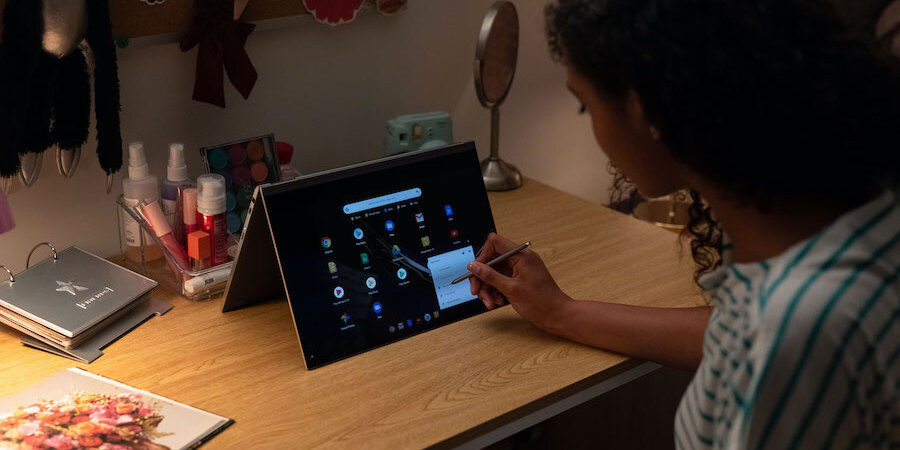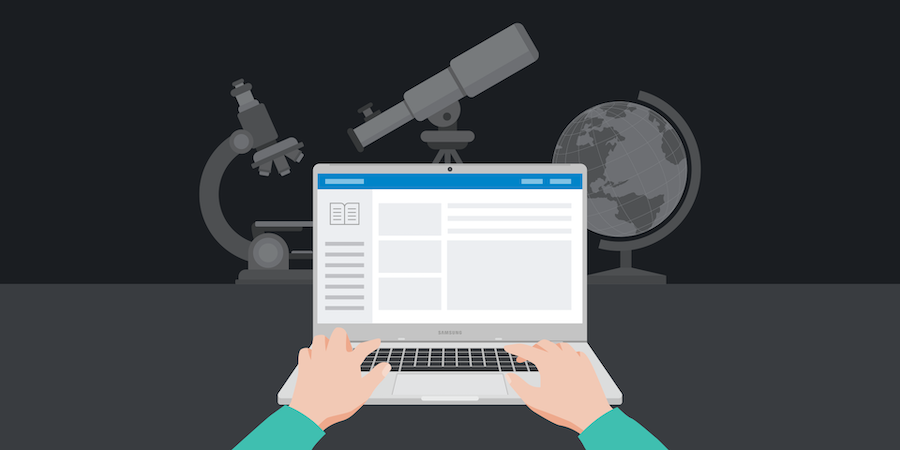While some students are fully engaged in remote learning, others are struggling to keep up. To take the pressure off educators dealing with unexpected challenges, many states waived high-stakes standardized tests last spring, and there’s a push to do the same for the 2020-2021 school year. Everywhere, K-12 districts are reevaluating their learning standards and goals, and teachers are using unique strategies to evaluate student progress — strategies that go beyond traditional assessments.
Here’s how you adapt your student assessments to a remote learning environment.
To skip straight to what you’re looking for, click the links below:
- Rethinking standards and assessments
- Competency- and project-based assessments
- Formative assessments
- Collaborative assignments
- Summative assessments
Rethinking standards and assessments
Before teachers can craft effective remote learning assessments, education leaders need to take a step back and evaluate existing learning standards.
“There needs to be a reconceptualization about what assessments need to look like and what they should demonstrate,” explains Miguel Gonzales, professor of educational policy and leadership at the University of Nevada, Las Vegas. “Students need to show mastery in a different way.”
To avoid problems with cheating and academic dishonesty, teachers should consider designing assessments based on projects, performances or collaborative efforts rather than rote responses. Here’s a closer look at five types of student assessments that you can adapt to remote learning:
1. Competency- and project-based assessments
Performance tasks are competency-based assessments that allow students to demonstrate their knowledge and apply their skills in realistic scenarios. Performance is typically associated with music, dance and sports, but the idea works in other disciplines with open-ended tasks that don’t depend on a single correct answer.
In a remote learning environment, a teacher might ask students to research the topography and infrastructure of an area and make recommendations about where a new resident should build a home. Using this kind of task as an assessment tool gives teachers insights about how well each student can think critically, consider multiple variables, research with technology tools and formulate a logical conclusion in a written or oral presentation. Performance tasks can also link subject areas and show students real-world ways to apply their knowledge.
17 innovative lesson ideas for remote learning
Get your free pack of multidisciplinary lesson plans to teach modern students with modern tools. Download Now
Like performance tasks, project-based assessments ask students to tackle a problem and use multiple strategies to arrive at a solution. Project-based learning (PBL) typically results in a tangible product — for example, building a simple machine or writing a song. Allowing students to create something promotes personal pride in their accomplishments, and using projects as assessments can be especially helpful during remote learning. If you plan to use a project-based assignment as an assessment, create a rubric to share with students before they begin.
2. Formative assessments
Formative assessments are designed to help teachers check in with students along their learning path. These assessments can take the form of quick, open-ended questions, verbal check-ins or group discussions. Formative assessments are a great way for students to assess their own progress, and these assessments are easily adaptable for remote learning. Google Classroom includes several tools for formative assessments, including options to create questions, quizzes and polls.
3. Collaborative assignments
Collaboration is a key skill in every career, and remote collaboration is becoming ubiquitous in today’s workforce. While students are engaged in remote learning, it’s a great time to introduce them to remote collaboration tools such as videoconferencing, messaging and document sharing. Assigning project-based assignments that depend on collaborative efforts between small groups of students can help teachers gauge students’ technology literacy, as well as their ability to work together toward a shared goal and meet a deadline.
To maximize the effectiveness of remote collaborative assignments, teachers should assign a student project manager to lead each group. Teachers should also make sure students know how to ask for help — through online messaging or through the videoconferencing app, if the class is in a meeting. Students will benefit from having a clear rubric for grading, projects that are easily broken into manageable parts and specific, team-oriented roles to play.
While hands-on collaborative projects are often difficult over videoconference, many STEM projects — from coding a game to building a robot — can be completed in a remote learning classroom. Student teams can share their finished projects with the class in a slideshow, an edited video or a live presentation.
4. Summative assessments
Most teachers are used to giving summative tests to students at the end of a chapter, unit or semester. Adapted to a remote learning environment, traditional summative assessments — with charts, multiple-choice or fill-in-the-blank questions — can still help gauge student progress.
The most obvious complication is accountability. While some apps and Google Classroom features can lock down student devices during exams, how can you be sure a student isn’t consulting their notes or looking up answers on another device? Ultimately, you can’t be sure, so more weight should be given to open-ended essay questions and project-based assessments. When the lion’s share of a student’s grade no longer hangs on summative assessments, you can take into account the wider view of their academic progress.
5. State standardized tests
Even before the pandemic made remote learning a necessity, U.S. dependence on high-stakes standardized tests had garnered criticism from some education experts. Daniel Koretz, a professor at the Harvard Graduate School of Education, published a book in 2017 decrying what he calls the “charade” of standardized testing in America. Koretz urges responsible use of standardized tests — as a benchmark tool to gather data and improve instruction, not as a measuring stick. Other critics point to the time-consuming nature of most state tests, arguing that they take away valuable classroom time.
The federal government excused all states from standardized tests during the initial COVID-19 lockdowns in spring 2020. The California Teachers Association urged the state to suspend the California Assessment of Student Performance and Progress (CAASPP) in 2021, citing widespread inequities in technology and broadband access among students, and concerns about data validity for remotely administered tests. Other states have granted or are contemplating similar waivers, including South Carolina, Georgia, Illinois, Michigan and Oklahoma. Even in states that have removed high-stakes requirements, though, district leaders may still choose to conduct the tests remotely rather than face a two-year gap in statewide benchmark data.
Learning how to thrive remotely
Ultimately, assessing student progress during remote learning requires creative approaches, but it is possible — and can yield long-term benefits for educators and students alike.
“We should use school closure as a momentous moment to make significant changes in how we teach with technology, and how we evaluate instruction,” says Gonzales. “It’s time to return to more project- or portfolio-based assessments that allow students to think broadly and demonstrate their achievements.”
Remote and hybrid learning is likely to stick around for years to come. Explore the breadth of Samsung’s other remote learning solutions. If you need help securing funding for your technology purchase, our free guide to securing ed-tech grants can help.








